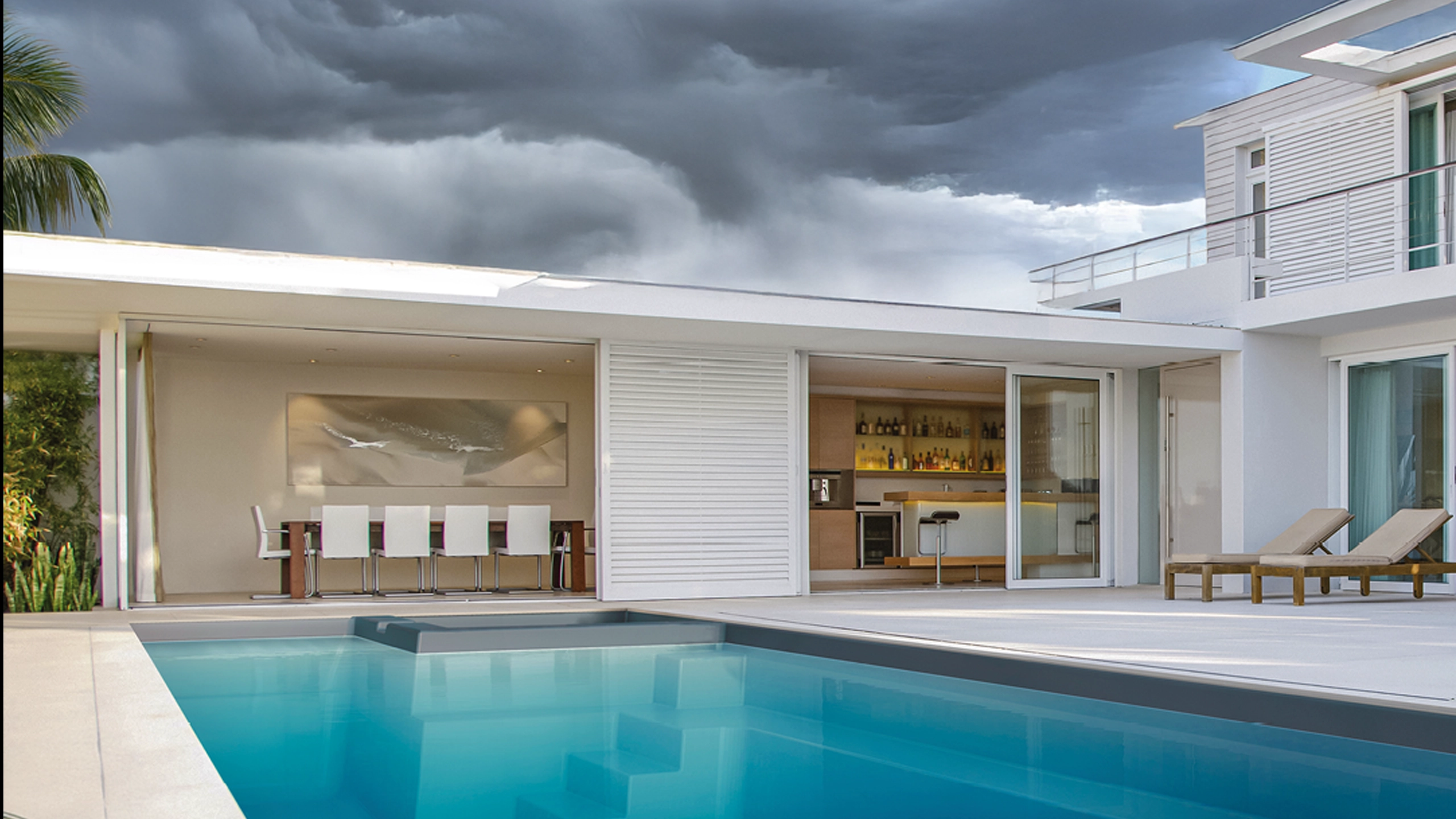
Ultimate Guide: How to Clean Your Pool After a Storm or Cyclone

In This Article:
- Inspect the surrounding area for hazards
- Assess Your Power Supply
- Inspect Pool Equipment
- Lower Water Levels if Necessary
- Remove Debris from the Swimming Pool
- Test your water chemistry
- Shock The Pool to Eliminate Contaminants
- Run the filtration System Continuously
- Final Steps Before Swimming
- Ongoing Monitoring and Maintenance
Severe weather events, such as storms and cyclones, can leave your pool area filled with potential damage with debris, murky water and unbalanced chemicals. Taking precautionary measures before a storm can help, but post-storm pool maintenance is essential to restore water quality, protect your equipment, and ensure safe swimming conditions. Follow these steps below on how to clean your pool after a storm or cyclone.
Inspect the surrounding area for hazards
Before checking your pool, inspect the surrounding area for hazards like fallen power lines, structural damage, or large debris. If you suspect any electrical issues with your pool equipment, contact a professional before proceeding.
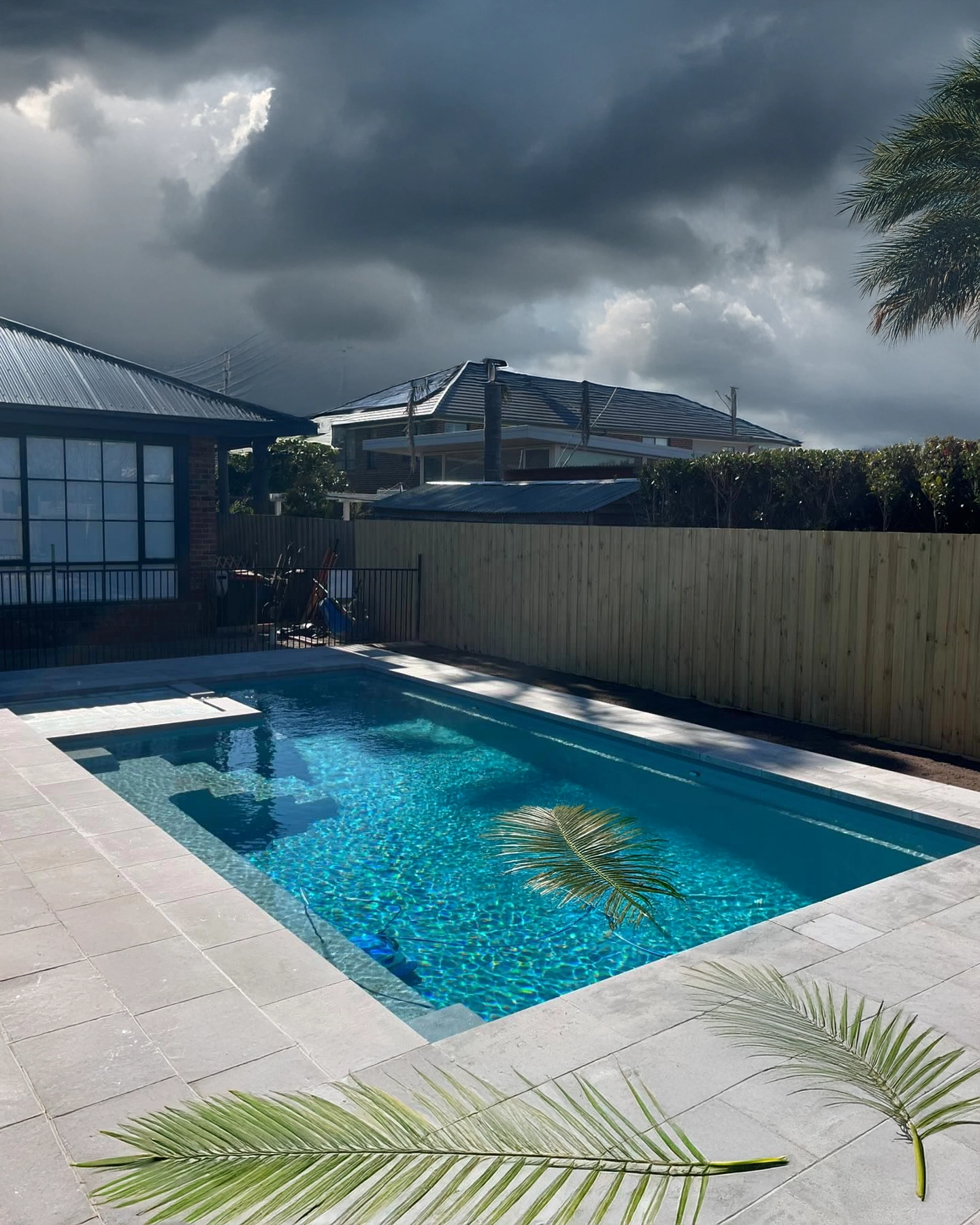
Assess Your Power Supply
Storms can cause power outages and fluctuations that may impact your pool system. Follow these steps based on your situation:
- Experiencing power surges? Switch off pool equipment at the circuit breaker to avoid damage.
- No power? Wait until electricity is restored before operating your pump or filtration system.
- Equipment was running during the storm? Check for unusual noises, failure to start, or visible damage.
- Damaged equipment? Consult a licensed pool technician before restarting the system.
Inspect Pool Equipment
Your swimming pool’s pump and filtration system are essential for clearing debris and restoring water clarity. Inspect and maintain the following:
- Ensure your pool pump is functioning properly.
- Check your heat pump for water intrusion or debris and clear any obstructions.
- Backwash or clean the filter to remove dirt and contaminants.
- If flooding occurred, have an electrician check electrical components before use.
- Inspect the pool cover for tears or damage that may affect heat retention and water evaporation control

Lower Water Levels if Necessary
Excess rainfall can cause your pool to overflow, which affects the filtration system. To restore balance:
- Use a submersible pump or set the filter to “waste” or “drain” mode to lower water to mid-skimmer level.
- If using a pump, monitor carefully to avoid over-draining.
- Check that drains and overflow outlets are functioning correctly.
- Follow local water disposal regulations to prevent environmental concerns.
Remove Debris from the Swimming Pool
Clearing debris helps prevent filtration blockages and improves water quality. Follow these steps on how to clean your pool after a storm:
- Use a skimmer net or pool rake to remove leaves, branches, and floating debris.
- Empty skimmer and pump baskets to prevent clogging.
- Brush pool walls and floors to loosen dirt and algae.
- Use an automatic pool cleaner or manually vacuum the pool to remove finer particles.
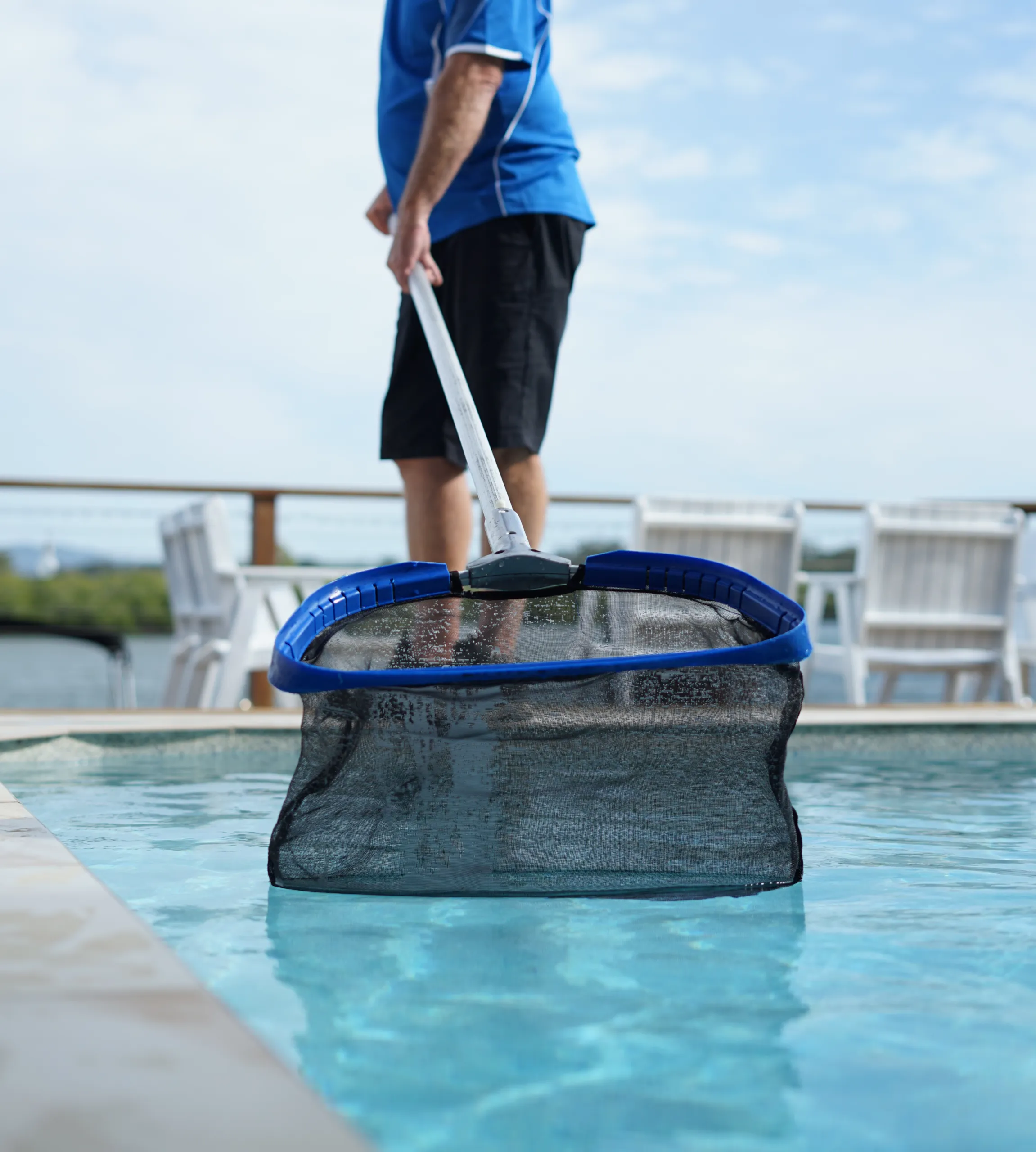
Test your water chemistry
Storms and cyclones can significantly alter your pool’s chemical balance. Test and adjust the following levels:
- pH: 7.2–7.6
- Chlorine: 1–3 ppm
- Alkalinity: 80–120 ppm
- Calcium Hardness: 200–400 ppm
Shock The Pool to Eliminate Contaminants
After heavy rain, your pool may contain bacteria, dirt, and organic matter. To disinfect the water:
- Add a high dose of pool shock (follow manufacturer guidelines for dosage).
- Rebalance pH levels and recheck chemical levels after shocking.
- Keep the pump running for at least 24 hours to circulate and purify the water.
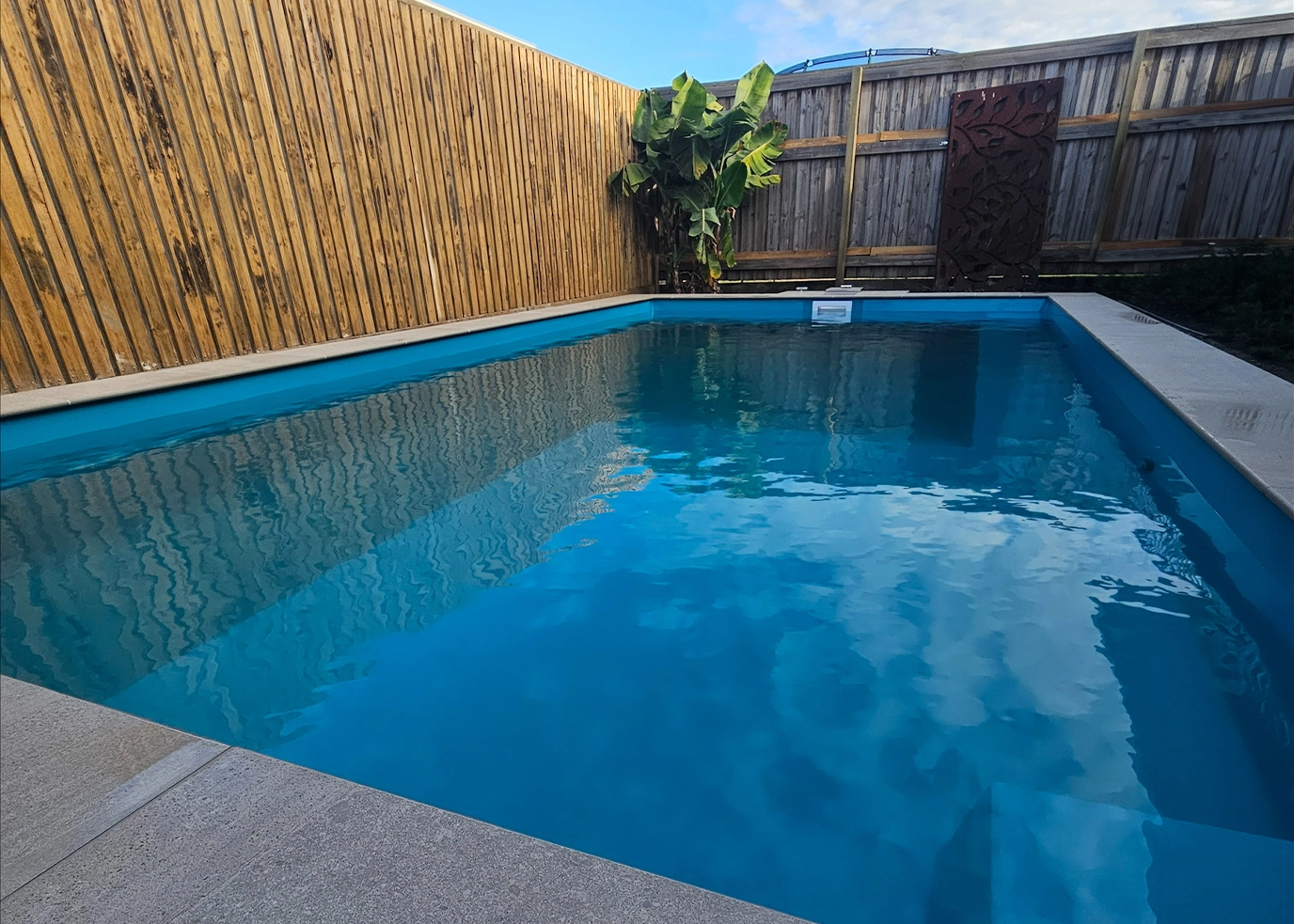
Run the filtration System Continuously
For best results, operate your pool’s filtration system for at least 24 hours after cleaning. If water remains cloudy:
- Use a pool clarifier or flocculant to bind small particles, making them easier to filter.
- Continue vacuuming and filtering until the water is clear.
Final Steps Before Swimming
Once your pool water is balanced and clear, take these final steps before swimming:
- Run an automatic pool vacuum to remove any remaining debris.
- Double-check and adjust chlorine, pH, and alkalinity as needed.
- Test pool water daily for the next few days to ensure stability.
Post-Storm Tip: Refer to your Nexus Pools warranty handbook for guidance on how to report and address any potential damage covered under your warranty. Swift action can prevent further damage and expedite the repair process.

Ongoing Monitoring and Maintenance
After the storm or cyclone, keep up with regular checks to maintain water quality and pool health:
- Test and adjust chemical levels as necessary.
- Backwash or clean the filter if it shows signs of clogging.
- Inspect the pump and skimmer baskets for any lingering debris.
Preparing your pool for a cyclone is an important step to protect your home investment, prevent costly repairs and ensures your pool remains safe for swimming.
By following the above steps on how to clean your pool after a storm to ensure a safe and happy swimming experience post weather event. If you experience major equipment issues or persistent water quality problems, consult a professional pool technician.
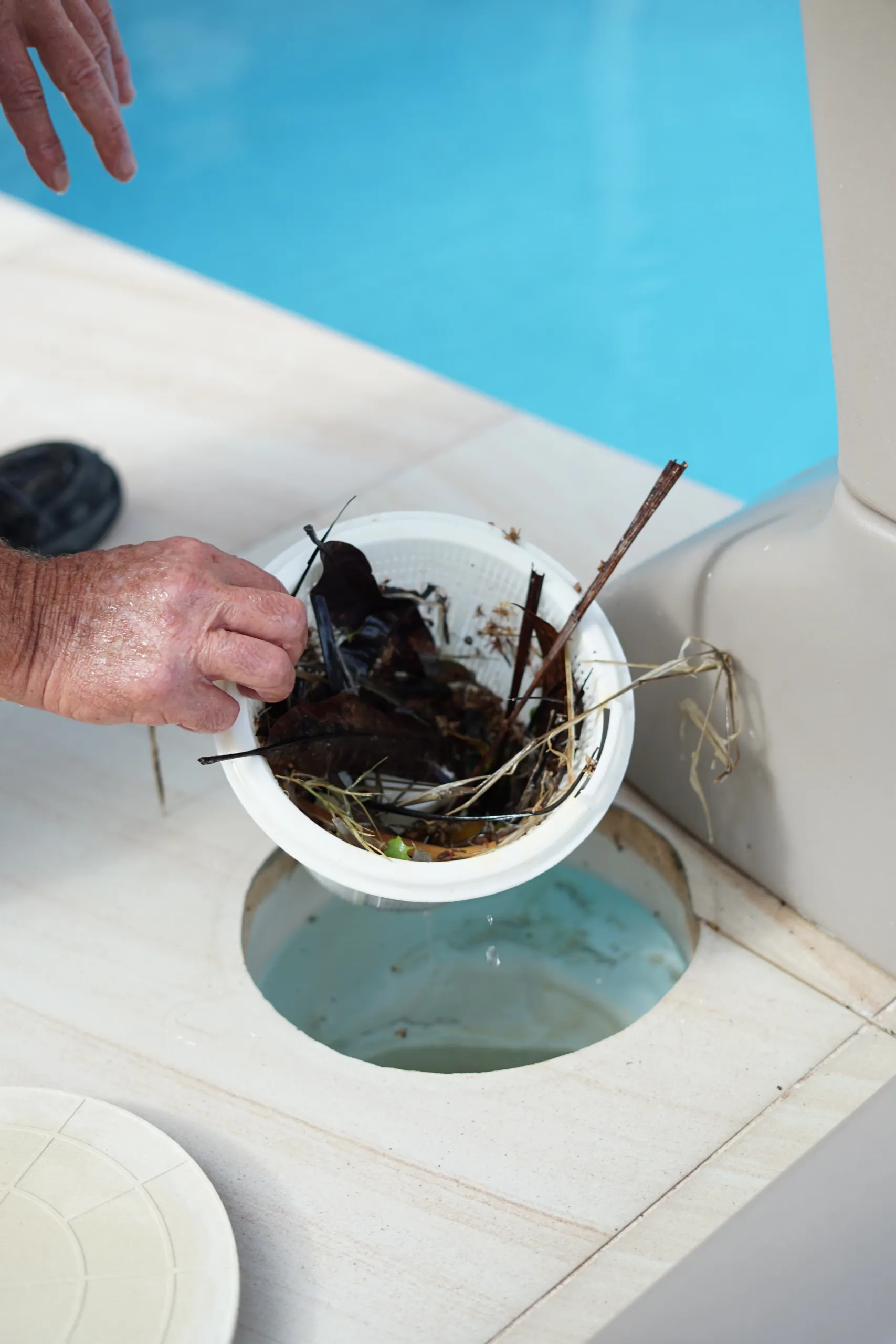
Staying informed on weather updates is also essential—follow the Bureau of Meteorology and their live updates on social media platforms to prepare for any upcoming storms, cyclones or any other weather changes of concern.
By taking proactive steps, you’ll keep your pool safe during extreme weather and have it ready to enjoy once the storm has passed. Stay prepared, stay safe, and trust Nexus Pools to support you throughout cyclone season and beyond.
Disclaimer: The tips and recommendations provided in this article are intended to help to know how to clean your pool after a storm or cyclone. They are general guidelines and are not intended as legal or professional advice. Please ensure that your pool is under warranty and that your home insurance policy covers damage to your pool in the event of a cyclone. Always consult with your insurance provider and review your warranty handbook for specific coverage details. Nexus Pools is not responsible for any damages or losses that may occur due to improper preparation or lack of coverage.
In This Article:
- Inspect the surrounding area for hazards
- Assess Your Power Supply
- Inspect Pool Equipment
- Lower Water Levels if Necessary
- Remove Debris from the Swimming Pool
- Test your water chemistry
- Shock The Pool to Eliminate Contaminants
- Run the filtration System Continuously
- Final Steps Before Swimming
- Ongoing Monitoring and Maintenance